Analysis on characteristics and reactivation mechanism of secondary landslides in the front part of the Xijitan giant landslide, Guide Basin
-
摘要:
黄河上游地区位于构造活动剧烈的青藏高原东北缘,其复杂的地质条件孕育了大量的滑坡、崩塌等地质灾害。文章以青海省贵德县尕让乡江拉新村北席芨滩巨型滑坡前缘次级滑坡为研究对象,采用无人机航测、InSAR地表位移监测、现场调查和室内力学试验等手段,详细分析了滑坡的地质背景、发育特征和复活机制。现场调查发现:滑坡区岩体结构破碎疏松,主要出露地层岩性为新近系泥岩和全新统坡积物;次级滑坡后缘发育多条大型裂缝和张拉带,地表变形明显,处于蠕滑变形阶段;密集发育的结构面对次级滑坡的复活起到控制作用,集中降雨导致的泥岩软化是诱发滑坡复活的关键因素,二者的互馈作用会持续降低滑坡区岩体的完整度和强度,导致次级滑坡的变形复活。研究结果可为黄河上游地区防灾减灾工作提供理论基础。
Abstract:The upper reaches of the Yellow River, located on the northeastern edge of the tectonically active Qinghai Tibet Plateau, are characterized by complex geological conditions that have led to a high incidence of geological disasters such as landslides and collapses. This study focuses on the secondary landslide at the front part of the Xijitan landslide on the north side in Jiangla Village, Garang Township, Guide County, Qinghai Province. Using methods including unmanned aerial vehicle surveying, InSAR surface displacement monitoring, and on-site investigation methods, a detailed analysis of the geological environmental conditions, development characteristics, and reactivation mechanism of the landslide are conducted. On-site investigation results indicate that the rock mass structure in the landslide area is fragmented, with concentrated rainfall. The main exposed strata are Neogene mudstone and Holocene slope deposits. Multiple large cracks and tension bands are developed at the rear edge of the landslide, and the surface deformation is obvious, in the stage of creep deformation. Analysis of the mechanism of landslide reactivation reveals that densely developed structures play a controlling role in the reactivation of secondary landslides, and the softening of mudstone caused by concentrated rainfall is a key factor in inducing landslide reactivation. The interaction between two factors continuously reduce the integrity and strength of the rock mass, leading to the deformation and reactivation of secondary landslides. The research results aim to provide a theoretical basis for disaster prevention and reduction work in the upper reaches of the Yellow River.
-
0. 引 言
由于早中生代的构造事件和晚中生代规模庞大的花岗质岩浆活动,我国东南地区浙江、福建、广东等地分布有大量花岗岩[1 − 2]。在强烈构造[3]和温暖湿润的亚热带季风性气候[4]的影响下,花岗岩风化强烈,形成广泛分布且深厚的花岗岩风化壳边坡[5 − 7],主要由花岗岩残积土和风化花岗岩组成,具有结构疏松、孔隙比大、粗颗粒占比大等特点[8 − 9],遇水时极易快速崩解软化[10 − 14]。我国东南地区常年降雨量大,梅雨期和台风期降雨占全年总降雨量的70%以上[15 − 16],长时间降雨或短时强降雨极易诱发大量花岗岩风化壳滑坡[17 − 21]。例如2024年6月9—19日,福建省龙岩、三明等地连续降雨,24 h最大降雨量300 mm以上,仅在龙岩市就诱发花岗岩风化层的滑坡等地质灾害1.6万处;2024年4月19日9时—20日9时,广东韶关江湾镇累计降雨达到217 mm,导致江湾镇80 km2范围内发生
1100 多处花岗岩风化层滑坡(据中国地质调查局)。因此,花岗岩风化壳滑坡灾害研究对防灾减灾具有极其重要的意义。花岗岩风化壳滑坡多沿花岗岩残积土和全/强风化花岗岩层界面发生[17 − 19, 21],因此,此类灾害防灾减灾研究的关键是花岗岩风化壳结构的探查,尤其是花岗岩风化残积土和全风化层厚度的确定。目前花岗岩风化壳结构探查的确定主要采用钻探、物探等方法[22 − 23],但均存在高密度探查时经济性差、现场操作复杂等问题。为克服这些劣势,基于地脉动观测的地下结构探测方法,以其仪器设备操作简单快速、现场布设灵活的优势而得到越来越多的应用。国内外学者开发了多种基于地脉动观测的地下结构反演算法:(1)基于地脉动台阵记录的地下结构反演算法[24 − 26]可获得较精确的地下分层结构剪切波速结构,但此类算法对分层界面不敏感,同时野外记录中需要组成台阵且必须获得较长时间的地脉动记录,才能完成地下结构反演,因此,此类算法较难快速识别花岗岩风化壳结构;(2)基于单点地脉动水平-竖直谱比法(horizontal-to-vertical spectral ratio,HVSR)的地下结构反演算法[27 − 29],由于单点短时(约30 min)地脉动记录即可获得地下结构,且对分层界面(如风化层-基岩界面、滑面等)敏感,近年来在滑坡勘察和监测中得到越来越多的应用[30],尤其在植被覆盖密度高的东南地区更加适用。因此,本文将采用HVSR法开展花岗岩风化壳边坡结构探查。
我国东南地区尤其福建地区靠近环太平洋地震带,地震可对东南花岗岩风化壳边坡产生扰动。一方面加剧花岗岩风化壳边坡的强度劣化;另一方面由于边坡结构和地形原因而产生动力非线性响应,进而加剧边坡失稳。因此,东南花岗岩风化壳滑坡灾害防灾减灾研究的另一个关键是结合花岗岩风化壳边坡结构和地形特点的边坡动力响应特征研究。开展边坡动力响应研究的主要方法有模型试验法、数值模拟法、现场观测法等[31 − 32]。除此之外,近年来基于地脉动HVSR法的动力响应研究也得到越来越多的关注[32 − 33]。地脉动HVSR法于1989年引入,用于快速估算场地动力响应参数,如卓越频率(f0)、高阻抗比地层界面深度、放大系数(HVSR@f0)、剪切波速(Vs)等,Bard和SESAME-Team [29]提出了该方法的标准操作流程,之后该方法得到广泛应用[27 − 28, 30]。Guo等[30, 33 − 34]通过对地脉动源区定位及体波和面波成分的分离探讨了HVSR法的理论依据并拓展了其边坡地下结构反演、场地动力响应特征和边坡安全监测研究中的应用。
本文以浙江省丽水市松阳县象溪镇南坑源花岗岩风化壳滑坡为研究案例(图1),通过野外调查、现场地脉动监测等方法,快速探查花岗岩风化壳分层结构,并基于地脉动在地层中的响应机理[30, 33],研究花岗岩风化壳边坡的动力响应特征,如卓越频率(f0)、放大系数(HVSR@f0)等随时间、坡向、地形等因素的关系,为东南地区花岗岩风化壳滑坡灾害防治提供科学支撑。
1. 数据与方法
1.1 数据
研究区位于浙江省丽水市松阳县象溪镇(图1),为低山丘陵地貌,区域内地质条件复杂,断层发育,地层以中生代花岗岩为主。在常年累月的差异性风化下形成了众多边坡,坡角多集中在25°~50°。
本文研究边坡案例现场见图2,坡高约18 m,坡长约50 m,坡向194°,坡度约32°。2019年7月,因降雨发生滑坡灾害,见图2(a),滑坡后暴露的全/强风化花岗岩见图3,滑坡南段为全/强风化粗粒花岗岩,见图3(a),主要为粗粒石英、强风化长石和高岭土,强度低,扰动后易溃散;滑坡中段为花岗闪长岩,见图3(b),颗粒较细,强度低。
本文采用三分量地震仪(Smartsolo IGU-16HR 3C)开展地脉动记录,地震仪布设地点见图2(b),S1台站位于坡顶,S2台站位于坡中,S3台站位于坡脚。为保证数据记录期间无强人类活动噪音影响,因此选择记录时间为2024年11月22日17:00至11月23日08:00。
1.2 地脉动HVSR法
HVSR法的基本原理是通过场地地表水平向和竖直向振动的频谱比表征地下结构[23]。当场地为基岩时,理论上特定频段中水平向和竖直向的振动响应相同,即HVSR谱无明显峰值。当场地地表为软弱土层,下伏为基岩,且两层介质的波速阻抗比较大时,HVSR谱在特定频段内出现相应显著的峰,该峰对应的频率为场地的卓越频率($ {f}_{i} $, i = 0, 1, 2, ···),其HVSR值(HVSR@ fi)可认为是场地的放大系数。
本文记录的地脉动为三分量(V,竖直向;NS,南北向;EW,东西向)连续时间序列,采样率为
1000 Hz。采用下列步骤进行数据处理:(1) 将三个分量的连续时间序列分割为60 s长的片段,片段间不重叠;
(2) 去除每个时间序列片段的均值和线性趋势,并依据仪器PZ参数去除每个时间序列片段的仪器响应;
(3) 计算短期(1 s)到长期(30 s)平均振幅比(STA/LTA),并保留STA/LTA在0.2~2.5范围内的时间序列片段,以保证数据不包含偶尔出现的能量暴发;
(4) 对保留的时间序列片段采用5%的余弦锥化,并采用快速傅立叶变换(FFT)法计算各片段的振幅谱$ V\left(t,f\right)、NS\left(t,f\right)、EW(t,f) $;
(5) 采用带宽系数为40的Konno-Ohmachi法[34]平滑处理各频谱;
(6) 依据以下公式计算所有时间序列片段的HVSR谱[27, 29]:
$$ \mathrm{H}\mathrm{V}\mathrm{S}\mathrm{R}\left(t,f\right)=\sqrt{\frac{NS{\left(t,f\right)}^{2}+EW{\left(t,f\right)}^{2}}{2V{\left(t,f\right)}^{2}}} $$ (1) (7) 计算HVSR谱在全部记录时间段内的均值和标准差,依据Bard和SESAME-Team[29]获得各台站所在地的卓越频率$ {f}_{i} $:
(8) 依据Konno等[35]和Guo等[34]反演各台站所在地的地下剪切波速Vs;
(9) 计算各方位角上的水平分量值,并计算各方位上的HVSR谱:
$$ {H}\left(t,f,\varphi \right)=-\mathrm{cos}\left(\varphi \right)NS\left(t,f\right)-\mathrm{sin}\left(\varphi \right)EW\left(t,f\right) $$ (2) $$ \mathrm{H}\mathrm{V}\mathrm{S}\mathrm{R}\left(t,f,\varphi \right)={H}\left(t,f,\varphi \right)/{V}\left(t,f\right) $$ (3) 式中:$ \varphi $——后方位角,自北顺时针0°~360°;
(10) 计算以坡角竖直向频谱为基准的坡面台站竖直向和水平向的放大谱:
$$ VV_{\mathrm{toe}}\mathrm{S}\mathrm{R}\left(t,f\right)=\mathrm{V}_{\mathrm{s}i}\left(t,f\right)/\mathrm{V}\mathrm{_{toe}}\left(t,f\right) $$ (4) $$ HV_{\mathrm{toe}}\mathrm{S}\mathrm{R}\left(t,f\right)=\mathrm{H}_{\mathrm{s}i}\left(t,f\right)/\mathrm{V}\mathrm{_{toe}}\left(t,f\right) $$ (5) 式中:$ V_{\mathrm{toe}}\left(t,f\right) $——坡脚S3台站竖直分量频谱;
$ {V}_{{\mathrm{s}}i}\left(t,f\right) $——坡面台站S1和S2竖直分量频谱;
$ {H}_{{\mathrm{s}}i}\left(t,f\right) $——坡面台站S1和S2水平分量频谱,由 式(6)计算:
$$ H\left(t,f\right)=\sqrt{\frac{NS{\left(t,f\right)}^{2}+EW{\left(t,f\right)}^{2}}{2}} $$ (6) (11) 计算各台站间HVSR谱在各频率对内的Pearson相关系数:
$$ CC_{\mathrm{S}_i,\mathrm{S}_j}(f_m,f_n)=\frac{\mathrm{c}\mathrm{o}\mathrm{v}(HVSR_{\mathrm{S}_i}\left(t,f_m\right),HVSR_{\mathrm{S}_j}\left(t,f_n\right))}{\sigma\left(HVSR_{\mathrm{S}_i}\left(t,f_m\right)\right)\sigma(HVSR_{\mathrm{S}_j}\left(t,f_n\right))} $$ (7) 式中,$ \mathrm{S}_i $、$ \mathrm{S}_j $——台站$ \mathrm{S_1} $、$ \mathrm{S_2} $、$ \mathrm{S_3} $;
$ {f}_{m} $、$ {f}_{n} $——频率,m = 1, 2, 3, ···,n = 1, 2, 3, ···。
2. 结果与分析
2.1 HVSR谱
采用式(1)计算各台站在时间和频率域内的HVSR谱(图4),各台站HVSR谱在记录时间内变化不显著,表明各台站在记录时间内无显著噪声干扰,依据Bard和SESAME-Team[29]建议的HVSR谱可靠性标准,可初步判定HVSR谱可靠且可用于地下结构反演的动力响应分析。
进一步计算各台站HVSR谱的均值和标准差,如图5所示,黑色实线为HVSR谱的均值,灰色区域为HVSR谱均值加减一个标准差的范围,依据Bard和SESAME-Team[29]建议的卓越频率识别标准,可识别出各台站所在场地的卓越频率,如坡顶台站S1处存在3个卓越频率($ {f}_{0} $ = 7.3 Hz,$ {f}_{1} $ = 14.9 Hz,$ {f}_{2} $ = 35.5 Hz),对应3个显著阻抗比界面,即可能为中-强-全风化花岗岩-花岗岩风化残积土4层风化层的界面;坡腰台站S2处存在3个卓越频率($ {f}_{0} $ = 13.4 Hz,$ {f}_{1} $ = 25.3 Hz,$ {f}_{2} $ = 50.0 Hz),对应3个显著阻抗比界面,即可能为中-强-全风化花岗岩-花岗岩风化残积土4层风化层的界面;坡脚台站S3处存在2个卓越频率($ {f}_{0} $ = 38.4 Hz,$ {f}_{1} $ = 54.2 Hz),对应两个显著阻抗比界面,即可能为强-全风化花岗岩-花岗岩风化残积土3层风化层的界面。
如图5所示,各卓越频率处的放大系数不同,最大的HVSR值(8~12)出现在最高的卓越频率处,见图5(a)(b)的f2处、图5(c)的f1处,说明表层风化残积层与下伏物质的阻抗比、强度差别最大,更容易形成滑面。而较低卓越频率的放大系数(2~4)不显著,这表明花岗岩风化壳中随深度增大风化残积土、全风化层逐渐过渡为强风化层和中风化层。
2.2 边坡地下结构反演
依据图5的平均HVSR谱,反演边坡压缩波速(Vp)和剪切波速(Vs)结构(图6),坡面存在1~2 m厚的低速体(Vs<150 m/s),现场调查发现,坡面为当地村民耕植工作形成的松散层底部为残积层,见图2(b)。随深度增大,波速总体逐渐增大,参考Moon等[27]在花岗岩风化壳中测得的Vs剖面可知,Vs值在150~260 m/s范围内的物质为全风化花岗岩,Vs值在260~395 m/s范围内的物质为强风化花岗岩,Vs值大于395 m/s的物质为中风化花岗岩。同时,各风化层的边界(图6中的黑线)基本与坡面平行,表明花岗岩的风化作用基本随深度而降低。然而,也可观察到部分速度异常,即局部速度较周边突然升高或降低,这与花岗岩的空间变异性相关,即该边坡的花岗岩结构和矿物在空间上不均匀,既存在粗粒花岗岩,又存在花岗闪长岩,其风化产物也不同,因此,表现为波速的局部变异。
2.3 边坡放大效应的方向性
在动力荷载作用下,边坡由于边坡内部结构和差异性和地形等因素的影响,可能会产生局部放大效应,同时具有方向性,因此,本文通过地脉动观测,开展了边坡放大效应的研究。图7为各台站各方位上的HVSR谱,图中洋红色线表示各频率上放大系数最大的方位,白色虚线为边坡的坡向(方位角194°)。由图可知,边坡各台站在各频率上均表现出与方位相关的放大效应,而在各台站的卓越频率处放大效应的方向性最显著,同时各频率上最显著放大效应所在的方位不同,总体与坡向大致相同。在坡顶台站S1和坡腰台站S2的卓越频率f2左右,最显著放大效应所在的方位发生较大偏转,使最显著放大效应发生在更接近于边坡坡向的方位上;而坡脚台站S3处,最显著放大效应所在方位较稳定,与坡向相差大约30°。这说明,边坡对动力的放大效应与坡向相关,且最显著的放大效应发生在边坡的坡向方向,这主要是由于边坡的临空方向更有利于边坡发生水平向位移,从而导致全频段内的放大效应,叠加地下分层结构导致的放大效应,使卓越频率处的放大效应在边坡坡向方向最显著。因此,在研究边坡的动力响应时,除考虑地形因素外,还应考虑边坡内部结构导致的放大效应。
2.4 边坡放大效应与高程的关系
在水平场地上,地表竖直向与基岩竖直向相比几乎无放大效应,因此,HVSR谱可较真实反映水平场的放大效应。然而,对于边坡场地,由于地形的变化,竖直向可能随地形发生不同程度的放大效应,此时,HVSR谱并不能表明坡面各点真实的动力响应特征,因此,本文选取坡脚处竖直向的频谱作为基准,计算坡面各台站竖直向和水平向分别与基准的比值(图8),从而真实反映由于地形造成的竖直向和水平向的放大效应。
由图8(a)可见,坡顶处(S1)和坡腰处(S2)竖直向的频谱在3~22 Hz频段内较坡脚处(S3)产生显著放大效应(VVtoeSR达7.5),且坡顶台站放大最显著,而在22~100 Hz频段内发生较显著的缩小效应。相似地,由图8(b)可见,坡顶处(S1)和坡腰处(S2)水平向的频谱在4~60 Hz频段内较坡脚处(S3)产生显著放大效应(HVtoeSR达17.5),且坡顶台站放大最显著;与竖直向不同的是,缩小效应几乎不存在。这表明,由于坡顶和坡腰处在f0(7.3 Hz和13.4 Hz)和f1(14.9 Hz和25.3 Hz)上竖直向的放大效应,导致水平放大效应被低估,而由于坡顶和坡腰处在f2(35.5 Hz和50.0 Hz)上的竖直向的缩小效应,导致水平放大效应被高估,而HVtoeSR更能反映边坡场地的真实响应特征。
2.5 边坡各台站HVSR谱的互相关
为研究各台站HVSR谱在各频率间和各台站间的相关性,即反映边坡各点放大效应是否同步,本文依据式(7)计算了各台站对在各频率对内HVSR的Pearson相关系数(图9)。
台站间HVSR谱仅在1~20 Hz频段内相同频率上拥有较高的相关系数,代表其放大效应的同步性强,这可能不利于边坡在动力荷载下的稳定。跨频率间的相关系数绝对值小于0.3,即相关性差,放大效应的同步性差,表明放大效应不因频率间信号的转化而同步。在同台站的自相关中,HVSR谱在1~10 Hz、40~100 Hz等频段内出现不同频率间的强相关,尤其是S1和S3台站,这说明各台站在频率间存在信号转化,但转化过程与各台站的地质结构相关。最终各台站地质结构影响下的信号转化导致台站间信号和放大效应不同步,这可能有利于动力荷载作用下边坡的稳定性。
3. 讨论
花岗岩风化壳边坡的灾变演化过程及防灾减灾研究的关键是对花岗岩风化壳厚度、内部结构的探查,从而为隐患识别、边坡岩土体结构劣化、长期稳定性评价提供依据。然而,由于东南地区低山丘陵区边坡数量众多,且植被覆盖茂密,常规结构探查手段存在不适用性和经济性差等问题,因此,需要针对性地探索经济、高效、准确的探查手段。地脉动作为一种被动的、易采集的地面震动信号,可广泛应用于地下结构探查中。基于地脉动HVSR法的地下结构探查方式更具有别的方法无可比拟的优势:(1)现场调查中灵活性高,可单点也可组网探查,同时每次只需要30 min[29]的记录即可有效开展地下结构反演。本文展示的15 h的地脉动记录表明地脉动HVSR法可稳定地获得卓越频率f0,进而可以稳定地反演地下结构。(2)地脉动HVSR法对地层界面敏感[27 − 28],因此,适用于调查地下结构中的高阻抗比界面,即极有可能发展为滑动面的地层界面,本文的研究表明,即使对花岗岩风化壳这类风化程度渐变的地层结构,地脉动HVSR法也可获得较好的地下结构反演结果。(3)本文展示的15 h的地脉动记录表明基于地脉动的放大系数随时间变化,这种变化可能与边坡结构的演化相关[30],同时也可能与地脉动信号本身随时间的变化相关[34 − 35],这为基于地脉动数据开展边坡动力响应提供了可能性,因此,未来可继续挖掘地脉动在边坡结构演化监测和边坡动力响应研究方面的潜力。
本研究还存在一定的局限性以及进一步研究的建议:(1)地脉动HVSR法虽然对地层界面较敏感,但无法获得地层的绝对波速,因此,需要结合台阵法,开发既能获得地层界面、又能获得地质体绝对波速的数据处理方式,提高反演的准确性和可推广性。(2)本文记录的时间仍较短,为开展基于地脉动的边坡动力响应研究,未来应增加地脉动的连续记录时长,从而获得足够多的动力信号样本量,尤其是真实强震的记录,将有助于获得边坡在真实强震条件下的动力响应特征。
4. 结论和建议
(1)单点地脉动水平-竖直谱比法(HVSR)作为一种被动地震勘探法,可快速高效地开展东南花岗岩风化壳边坡结构探查,本文展示的案例表明该方法可有效探查风化壳中残积土、全-强风化花岗岩等分层结构,为风化壳边坡稳定性评价提供依据。
(2)花岗岩风化壳边坡存在显著的场地效应和地形效应,即边坡可在坡向方向产生显著的动力荷载放大效应,同时,随高程的增大,坡顶和坡腰可产生显著的竖直向和水平向动力放大效应。
(3)各台站间同频率上存在放大同步现象,这不利于动力荷载作用下边坡的稳定性,但跨频率间放大不同步,这有利于动力荷载作用下边坡的稳定性。
(4)未来研究中,建议加长花岗岩风化壳边坡上的地脉动连续记录,结合降雨等的监测,构建地脉动HVSR指标与降雨参数的关联关系,为降雨条件下花岗岩风化壳滑坡的监测和预警提供依据,同时积累强震记录,从而进一步分析花岗岩风化壳边坡在强动力荷载作用下的响应特征和边坡结构演化过程。
-
图 2 席芨滩滑坡概况图
注:a为席芨滩滑坡位置图;b为席芨滩滑坡分期图;c为席芨滩滑坡剖面图[30];d为次级滑坡航拍图;e、f、g为席芨滩滑坡分期发育特征。
Figure 2. Overview of the location of Xijitan landslide
表 1 泥岩峰值强度和残余强度拟合参数
Table 1 Fitting parameters for peak strength and residual strength of mudstone
a b R2 峰值强度 3.028 ± 0.479 7.835 ± 0.656 0.9523 残余强度 3.663 ± 0.209 1.517 ± 0.287 0.9935 -
[1] 殷跃平, 高少华. 高位远程地质灾害研究: 回顾与展望[J]. 中国地质灾害与防治学报,2024,35(1):1 − 18. [YIN Yueping, GAO Shaohua. Research on high-altitude and long-runout rockslides: review and prospects[J]. The Chinese Journal of Geological Hazard and Control,2024,35(1):1 − 18. (in Chinese with English abstract)] YIN Yueping, GAO Shaohua. Research on high-altitude and long-runout rockslides: review and prospects[J]. The Chinese Journal of Geological Hazard and Control, 2024, 35(1): 1 − 18. (in Chinese with English abstract)
[2] 兰恒星,彭建兵,祝艳波,等. 黄河流域地质地表过程与重大灾害效应研究与展望[J]. 中国科学:地球科学,2022,52(2):199 − 221. [LAN Hengxing,PENG Jianbing,ZHU Yanbo,et al. Research and prospect of geological surface processes and major disaster effects in the Yellow River Basin[J]. Science Chinese:Earth Science,2022,52(2):199 − 221. (in Chinese with English abstract)] LAN Hengxing, PENG Jianbing, ZHU Yanbo, et al. Research and prospect of geological surface processes and major disaster effects in the Yellow River Basin[J]. Science Chinese: Earth Science, 2022, 52(2): 199 − 221. (in Chinese with English abstract)
[3] YIN Z,QIN X,YIN Y,et al. Landslide developmental characteristics and response to climate change since the last glacial in the upper reaches of the Yellow River,NE Tibetan Plateau[J]. Acta Geologica Sinica‐English Edition,2014,88(2):635 − 646. DOI: 10.1111/1755-6724.12219
[4] 胡贵寿. 青海省特大型滑坡发育分布规律[D]. 北京:中国地质大学,2013. [HU Guishou. Development and distribution patterns of large-scale landslides in Qinghai Province [D]. Beijing:China University of Geosciences,2013 (in Chinese with English abstract)] HU Guishou. Development and distribution patterns of large-scale landslides in Qinghai Province [D]. Beijing: China University of Geosciences, 2013 (in Chinese with English abstract)
[5] 崔之久,伍永秋,刘耕年,等. 关于“昆仑-黄河运动”[J]. 中国科学(D辑),1998,28(1):53 − 59. [CUI Zhijiu,WU Yongqiu,LIU Gengnian,et al. On the Kunlun Yellow River Movement[J]. Science In Chinese (Series D),1998,28(1):53 − 59. (in Chinese with English abstract)] CUI Zhijiu, WU Yongqiu, LIU Gengnian, et al. On the Kunlun Yellow River Movement[J]. Science In Chinese (Series D), 1998, 28(1): 53 − 59. (in Chinese with English abstract)
[6] 张春山. 黄河上游地区地质灾害形成条件与风险评价研究[D]. 北京:中国地质科学院,2003. [ZHANG Chunshan. Study on the formation conditions and risk assessment about geological hazards in the upper reaches of the Yellow River [D]. Beijing: Chinese Academy of Geological Sciences,2003. (in Chinese with English abstract)] ZHANG Chunshan. Study on the formation conditions and risk assessment about geological hazards in the upper reaches of the Yellow River [D]. Beijing: Chinese Academy of Geological Sciences, 2003. (in Chinese with English abstract)
[7] 贾润幸,方维萱,张建国,等. 山西清徐——太谷地区地裂缝形成机理[J]. 地质通报,2022,41(7):1282 − 1290. [JIA Runxing,FANG Weixuan,ZHANG Jianguo,et al. The formation mechanism of ground fissures in the Qingxu Taigu area of Shanxi Province[J]. Geolgical Bulletin of China,2022,41(7):1282 − 1290. (in Chinese with English abstract)] JIA Runxing, FANG Weixuan, ZHANG Jianguo, et al. The formation mechanism of ground fissures in the Qingxu Taigu area of Shanxi Province[J]. Geolgical Bulletin of China, 2022, 41(7): 1282 − 1290. (in Chinese with English abstract)
[8] 范宣梅,方成勇,戴岚欣,等. 地震诱发滑坡空间分布概率近实时预测研究——以2022年6月1日四川芦山地震为例[J]. 工程地质学报,2022,30(3):729 − 739. [FAN Xuanmei,FANG Chengyong,DAI Lanxin,et al. Near real time prediction of spatial distribution probability of earthquake-induced landslides: Take the Lushan Earthquake on June 1,2022 as an example[J]. Journal of Engineering Geology,2022,30(3):729 − 739. (in Chinese with English abstract)] FAN Xuanmei, FANG Chengyong, DAI Lanxin, et al. Near real time prediction of spatial distribution probability of earthquake-induced landslides: Take the Lushan Earthquake on June 1, 2022 as an example[J]. Journal of Engineering Geology, 2022, 30(3): 729 − 739. (in Chinese with English abstract)
[9] 殷跃平,王文沛,张楠,等. 强震区高位滑坡远程灾害特征研究——以四川茂县新磨滑坡为例[J]. 中国地质,2017,44(5):827 − 841. [YIN Yueping,WANG Wenpei,ZHANG Nan,et al. Long runout geological disaster initiated by the ridge-top rockslide in a strong earthquake area:A case study of the Xinmo landslide in Maoxian County,Sichuan Province[J] Geology in China,2017,44(5):827 − 841. (in Chinese with English abstract)] YIN Yueping, WANG Wenpei, ZHANG Nan, et al. Long runout geological disaster initiated by the ridge-top rockslide in a strong earthquake area: A case study of the Xinmo landslide in Maoxian County, Sichuan Province[J] Geology in China, 2017, 44(5): 827 − 841. (in Chinese with English abstract)
[10] 杨琴,范宣梅,许强,等. 北川唐家湾滑坡变形历史与形成机制研究[J]. 水文地质工程地质,2018,45(2):136 − 141. [YANG Qin,FAN Xuanmei,XU Qiang,et al. A study of the deformation history and mechanism of the Tangjiawan landslide[J]. Hydrogeology & Engineering Geology,2017,44(5):827 − 841. (in Chinese with English abstract)] YANG Qin, FAN Xuanmei, XU Qiang, et al. A study of the deformation history and mechanism of the Tangjiawan landslide[J]. Hydrogeology & Engineering Geology, 2017, 44(5): 827 − 841. (in Chinese with English abstract)
[11] CHEN G,JIN JC,MENG X,et al. Influence of tectonic effects on the formation and characteristics of landslide dams on the NE Tibetan Plateau:A case study in the Bailong River Basin,China[J]. Landslides,2024:1 − 19.
[12] YU H,LI A,et al. "Present-day crustal deformation and strain transfer in northeastern Tibetan Plateau[J]. Earth and Planetary Science Letters,487(2018):179 − 189.
[13] 周保,马涛,魏正发,等. 黄河上游曲哇加萨滑坡“9•20”动力学过程模拟与分析[J]. 中国地质灾害与防治学报,2022,33(2):9 − 15. [ZHOU Bao,MA Tao,WEI Zhengfai,et al. Dynamic simulation and analysis of “9•20” sliding process of Quwajiasa landslide in the upper reaches of Yellow River[J]. The Chinese Journal of Geological Hazard and Control,2022,33(2):9 − 15. (in Chinese with English abstract)] ZHOU Bao, MA Tao, WEI Zhengfai, et al. Dynamic simulation and analysis of “9•20” sliding process of Quwajiasa landslide in the upper reaches of Yellow River[J]. The Chinese Journal of Geological Hazard and Control, 2022, 33(2): 9 − 15. (in Chinese with English abstract)
[14] 魏刚,殷志强,马吉福,等. 黄河上游阿什贡滑坡群发育期次及演化过程分析[J]. 水文地质工程地质,2016,43(6):133 − 140. [WEI Gang,YIN Zhiqiang,MA Jifu,et al. An analysis of forming stages and evolution process of the Ashigong landslide cluster in the upper reaches of the Yellow River[J]. Hydrogeology & Engineering Geology,2016,43(6):133 − 140. (in Chinese with English abstract)] WEI Gang, YIN Zhiqiang, MA Jifu, et al. An analysis of forming stages and evolution process of the Ashigong landslide cluster in the upper reaches of the Yellow River[J]. Hydrogeology & Engineering Geology, 2016, 43(6): 133 − 140. (in Chinese with English abstract)
[15] 李小林,郭小花,李万花. 黄河上游龙羊峡—刘家峡河段巨型滑坡形成机理分析[J]. 工程地质学报,2011,19(4):516 − 529. [LI Xiaolin,GUO Xiaohua,LI Wanhua. Mechanism of giant landslides from Longyangxia Vally to Liujiaxia Vally along upper Yellow River[J]. Journal of Engineering Geology,2011,19(4):516 − 529. (in Chinese with English abstract)] DOI: 10.3969/j.issn.1004-9665.2011.04.013 LI Xiaolin, GUO Xiaohua, LI Wanhua. Mechanism of giant landslides from Longyangxia Vally to Liujiaxia Vally along upper Yellow River[J]. Journal of Engineering Geology, 2011, 19(4): 516 − 529. (in Chinese with English abstract) DOI: 10.3969/j.issn.1004-9665.2011.04.013
[16] 张永双,杜国梁,姚鑫,等. 塔吉克斯坦MS7.2级地震滑坡危险性快速评估及其对中国西部边疆山区巨灾风险防控的启示[J]. 地质学报,2023,97(5):1371 − 1382. [ZHANG Yongshuang,DU Guoliang,YAO Xin,et al. Rapid assessment of landslide risk during the MS7.2 earthquake in Tajikistan inspiration on disaster risk prevention and control in the mountainous regions of western China's border regions[J]. Acta Geologica Sinica,2023,97(5):1371 − 1382. (in Chinese with English abstract)] DOI: 10.3969/j.issn.0001-5717.2023.05.001 ZHANG Yongshuang, DU Guoliang, YAO Xin, et al. Rapid assessment of landslide risk during the MS7.2 earthquake in Tajikistan inspiration on disaster risk prevention and control in the mountainous regions of western China's border regions[J]. Acta Geologica Sinica, 2023, 97(5): 1371 − 1382. (in Chinese with English abstract) DOI: 10.3969/j.issn.0001-5717.2023.05.001
[17] 邓威,肖世国. 含裂隙近水平红层软岩边坡渗透稳定性模型试验[J]. 水文地质工程地质,2024,51(1):57 − 68. [DENG Wei,XIAO Shiguo. Model test on stability of soft rock slopes composed of nearly horizontal redbeds with cracks[J]. Hydrogeology & Engineering Geology,2024,51(1):57 − 68. (in Chinese with English abstract)] DENG Wei, XIAO Shiguo. Model test on stability of soft rock slopes composed of nearly horizontal redbeds with cracks[J]. Hydrogeology & Engineering Geology, 2024, 51(1): 57 − 68. (in Chinese with English abstract)
[18] 刘建强,许强,郑光,等. 贵州省鸡场滑坡地下水化学特征反映的水-岩(土)作用[J]. 水文地质工程地质,2023,50(2):132 − 140. [LIU Jianqiang,XU Qiang,ZHENG Guang,et al. Water-rock /soil interaction reflected by the chemical characteristics of groundwater of Jichang landslide in Guizhou Province[J]. Hydrogeology & Engineering Geology,2023,50(2):132 − 140. (in Chinese with English abstract)] LIU Jianqiang, XU Qiang, ZHENG Guang, et al. Water-rock /soil interaction reflected by the chemical characteristics of groundwater of Jichang landslide in Guizhou Province[J]. Hydrogeology & Engineering Geology, 2023, 50(2): 132 − 140. (in Chinese with English abstract)
[19] KONG Lingwei,ZENG Zhixiong,BAI Wei,et al. Engineering geological properties of weathered swelling mudstones and their effects on the landslides occurrence in the Yanji section of the Jilin-Hunchun high-speed railway[J]. Bulletin of Engineering Geology and the Environment,2018,77(4):1491 − 1503. DOI: 10.1007/s10064-017-1096-2
[20] ZHOU Zhe,CHEN Shanxiong,WANG Yinhui,et al. Crack evolution characteristics and cracking mechanism of red beds in central Sichuan during seepage and swelling[J]. Geofluids,2021,Article ID 9981046:1 − 19.
[21] WANG H J,SUN P,ZHANG S,et al. Rainfall-induced landslide in loess area,Northwest China:A case study of the Changhe landslide on September 14,2019,in Gansu Province[J]. Landslides,2020,17(9):2145 − 2160 DOI: 10.1007/s10346-020-01460-0
[22] LIU Y J,CHIU Y Y,TSAI F T C,et al. Analysis of landslide occurrence time via rainfall intensity and soil water index ternary diagram[J]. Landslides,2022,19(12):2823 − 2837. DOI: 10.1007/s10346-022-01944-1
[23] 魏刚,殷志强,罗银飞,等. 黄河上游康杨滑坡堆积体特征及形成机理分析[J]. 中国地质灾害与防治学报,2022,33(2):1 − 8. [WEI Gang,YIN Zhiqiang,LUO Yinfei,et al. Analysis on the accumulation deposits characteristics and formation mechanism of Kangyang landslide in the upper reaches of Yellow River[J]. The Chinese Journal of Geological Hazard and Control,2022,33(2):1 − 8. (in Chinese with English abstract)] WEI Gang, YIN Zhiqiang, LUO Yinfei, et al. Analysis on the accumulation deposits characteristics and formation mechanism of Kangyang landslide in the upper reaches of Yellow River[J]. The Chinese Journal of Geological Hazard and Control, 2022, 33(2): 1 − 8. (in Chinese with English abstract)
[24] CHEN L,YANG H,SONG K,et al. Failure mechanisms and characteristics of the Zhongbao landslide at Liujing Village,Wulong,China[J]. Landslides,2021,18(4):1445 − 1457. DOI: 10.1007/s10346-020-01594-1
[25] 万飞鹏,杨为民,邱占林,等. 甘肃岷县纳古呢沟滑坡-泥石流灾害链成灾机制及其演化[J]. 中国地质,2023,50(3):911 − 925. [WAN Feipeng,YANG Weimin,QIU Zhanlin,et al. Disaster mechanism and evolution of Nagune Gully landslide-debris flow disaster chain in Minxian County,Gansu Province[J]. Geology in China,2023,50(3):911 − 925. (in Chinese with English abstract)] WAN Feipeng, YANG Weimin, QIU Zhanlin, et al. Disaster mechanism and evolution of Nagune Gully landslide-debris flow disaster chain in Minxian County, Gansu Province[J]. Geology in China, 2023, 50(3): 911 − 925. (in Chinese with English abstract)
[26] GRABER A,SANTI P,MEZA Arestegui P. Constraining the critical groundwater conditions for initiation of large,irrigation-induced landslides,Siguas River Valley,Peru[J]. Landslides,2021,18(12):3753 − 3767. DOI: 10.1007/s10346-021-01767-6
[27] 史立群,魏刚,殷志强,等. 青海尖扎盆地寺门村滑坡发育特征及成因分析[J]. 中国地质灾害与防治学报,2020,31(5):15 − 21. [SHI Liqun,WEI Gang,YIN Zhiqiang,et al. Characteristics and formation of Simencun landslides in Jianzha Basin of Qinghai Province[J]. The Chinese Journal of Geological Hazard and Control,2020,31(5):15 − 21. (in Chinese with English abstract)] SHI Liqun, WEI Gang, YIN Zhiqiang, et al. Characteristics and formation of Simencun landslides in Jianzha Basin of Qinghai Province[J]. The Chinese Journal of Geological Hazard and Control, 2020, 31(5): 15 − 21. (in Chinese with English abstract)
[28] 冉林,马鹏辉,彭建兵,等. 甘肃黑方台“10•5”黄土滑坡启动及运动特征分析[J]. 中国地质灾害与防治学报,2022,33(6):1 − 9. [RAN Lin,MA Penghui,PENG Jianbing,et al. The initiation and motion characteristics of the “10•5” loess landslide in the Heifangtai platform,Gansu Province[J]. The Chinese Journal of Geological Hazard and Control,2022,33(6):1 − 9. (in Chinese with English abstract)] RAN Lin, MA Penghui, PENG Jianbing, et al. The initiation and motion characteristics of the “10•5” loess landslide in the Heifangtai platform, Gansu Province[J]. The Chinese Journal of Geological Hazard and Control, 2022, 33(6): 1 − 9. (in Chinese with English abstract)
[29] 潘保田. 贵德盆地地貌演化与黄河上游发育研究[J]. 干旱区地理,1994(3):43 − 50. [PAN Baotian. Study on the landform evolution of the Guide Basin and the development of the upper Yellow River[J]. Arid Area Geography,1994(3):43 − 50. (in Chinese with English abstract)] DOI: 10.13826/j.cnki.cn65-1103/x.1994.03.006. PAN Baotian. Study on the landform evolution of the Guide Basin and the development of the upper Yellow River[J]. Arid Area Geography, 1994(3): 43 − 50. (in Chinese with English abstract) DOI: 10.13826/j.cnki.cn65-1103/x.1994.03.006.
[30] 赵无忌,殷志强,马吉福,等. 黄河上游贵德盆地席芨滩巨型滑坡发育特征及地貌演化[J]. 地质论评,2016,62(3):709 − 721. [ZHAO Wuji,YIN Zhiqiang,MA Jifu,et al. Development characteristics and geomorphological evolution of the Xijitan giant landslide in the Guide Basin of the Upper Yellow River[J]. Geological Review,2016,62(3):709 − 721. (in Chinese with English abstract)] DOI: 10.16509/j.georeview.2016.03.013. ZHAO Wuji, YIN Zhiqiang, MA Jifu, et al. Development characteristics and geomorphological evolution of the Xijitan giant landslide in the Guide Basin of the Upper Yellow River[J]. Geological Review, 2016, 62(3): 709 − 721. (in Chinese with English abstract) DOI: 10.16509/j.georeview.2016.03.013.
[31] 赵无忌. 黄河上游贵德盆地滑坡泥石流扇发育特征及地貌演化过程[D]. 北京:中国地质大学(北京),2015. [ZHAO Wuji. The formation characteristics and geomorphical evolution of the landslides and debris flow fans in Guide Basin,the upper Yellow River [D]. Beijing: China University of Geosciences (Beijing),2015. (in Chinese with English abstract)] ZHAO Wuji. The formation characteristics and geomorphical evolution of the landslides and debris flow fans in Guide Basin, the upper Yellow River [D]. Beijing: China University of Geosciences (Beijing), 2015. (in Chinese with English abstract)
[32] CRADDOCK W H, KIRBY E, HARKINS N W, et al. Rapid fluvial incision along the Yellow River during headward basin integration[J]. Nature Geoscience,2010(3):209 − 213.
[33] ZHANG H, ZHANG P, CHAMPAGNAC J D, et al. Pleistocene drainage reorganization driven by the isostatic response to deep incision into the northeastern Tibetan Plateau[J]. Geology, 2014, 42(4): 303-306.
[34] 周保. 黄河上游(拉干峡—寺沟峡段)特大型滑坡发育特征与群发机理研究[D]. 西安: 长安大学, 2010. [ZHOU Bao. Study on the development characteristics and mass mechanism of super-large landslide in the upper reaches of the Yellow River (Laganxia-Sigouxia section)[D]. Xi’an: Chang’an University, 2010. (in Chinese with English abstract)] ZHOU Bao. Study on the development characteristics and mass mechanism of super-large landslide in the upper reaches of the Yellow River (Laganxia-Sigouxia section)[D]. Xi’an: Chang’an University, 2010. (in Chinese with English abstract)
[35] National Earth System Science Data Center,National Science & Technology Infrastructure of China (http://www.geodata.cn).
[36] 刘佑荣,唐辉明. 岩体力学[M]. 北京:化学工业出版社,2009. [LIU Yourong,TANG Huiming. Rock mass mechanics[M]. Beijing:Chemical Industry Press,2009. (in Chinese)] LIU Yourong, TANG Huiming. Rock mass mechanics[M]. Beijing: Chemical Industry Press, 2009. (in Chinese)
-
期刊类型引用(4)
1. 左小清,张荐铭,李勇发,郭世鹏,李永宁,石超,黄成. 典型山区InSAR地表形变监测与滑坡灾害识别. 昆明理工大学学报(自然科学版). 2024(04): 89-104 .  百度学术
百度学术
2. 赵蔓,孙俊,朱恺悦. 云南兰坪县啦井村泥石流模拟预测及风险评价. 中国地质灾害与防治学报. 2024(05): 110-119 .  本站查看
本站查看
3. 黄梓轩,王盈,王崔林,朱明,邓宝信. 管道地质灾害的风险分级及分段研究. 山西建筑. 2024(22): 185-188 .  百度学术
百度学术
4. 杨红兰,任亚琴,赵娜,王杏,邱素红. 亚热带丛林野外环境条件下3种包装材料对手术器械无菌性能影响的观察. 中国消毒学杂志. 2024(12): 961-963 .  百度学术
百度学术
其他类型引用(1)





 下载:
下载:












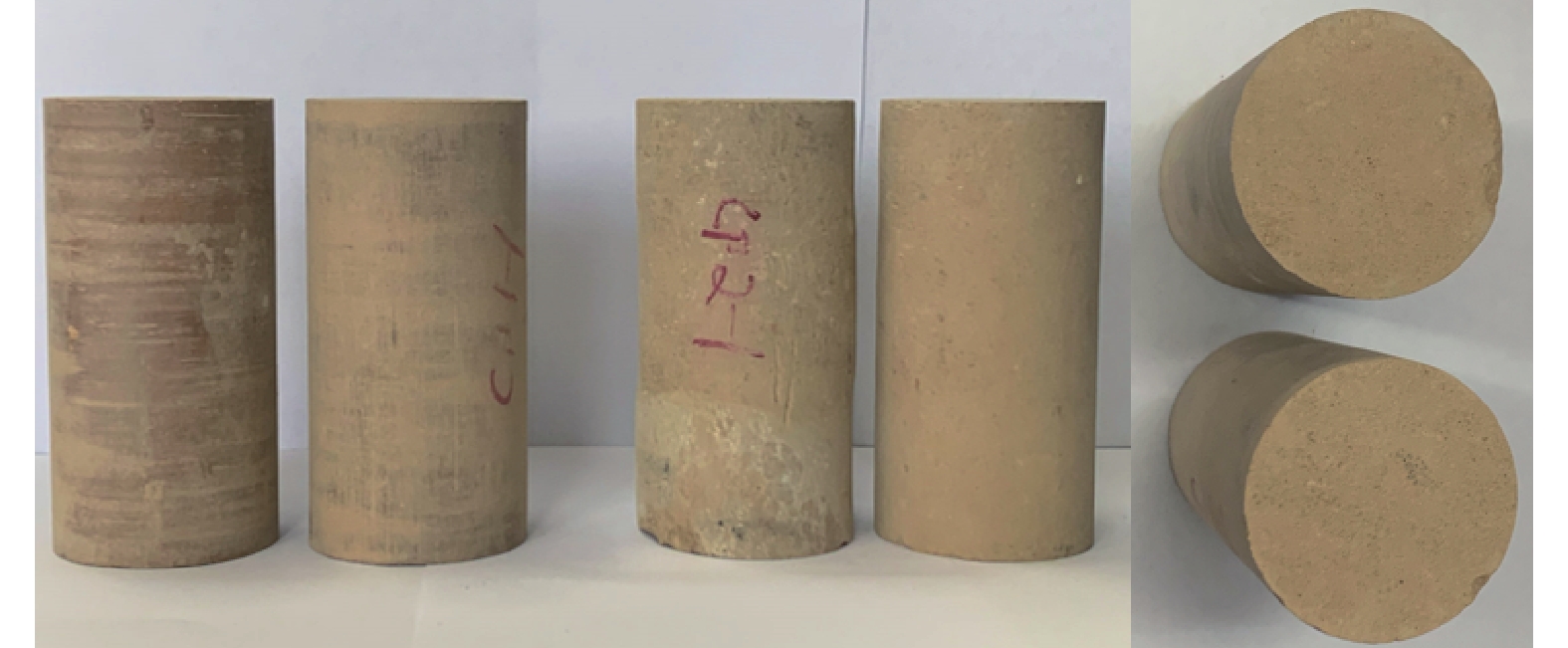




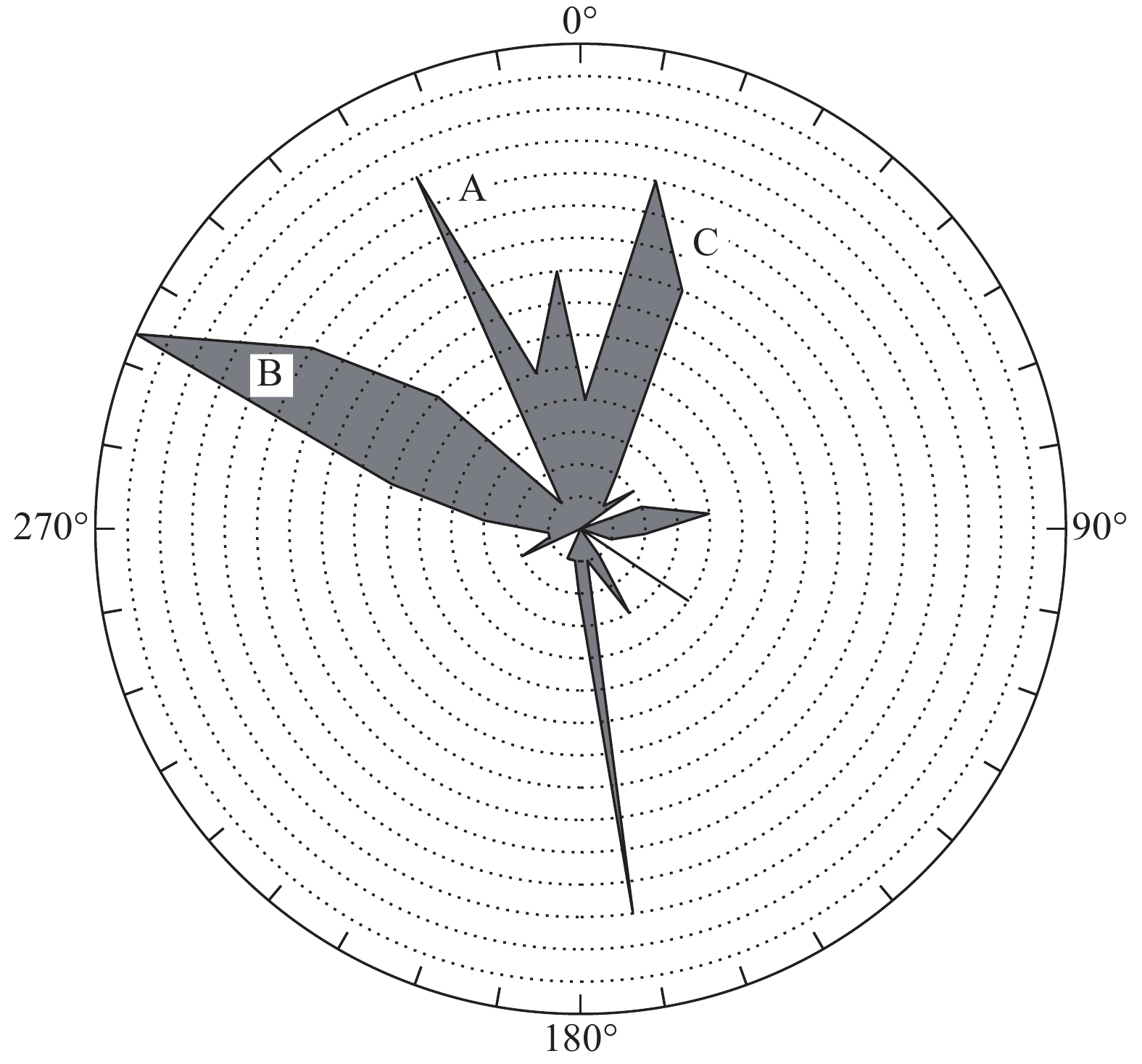
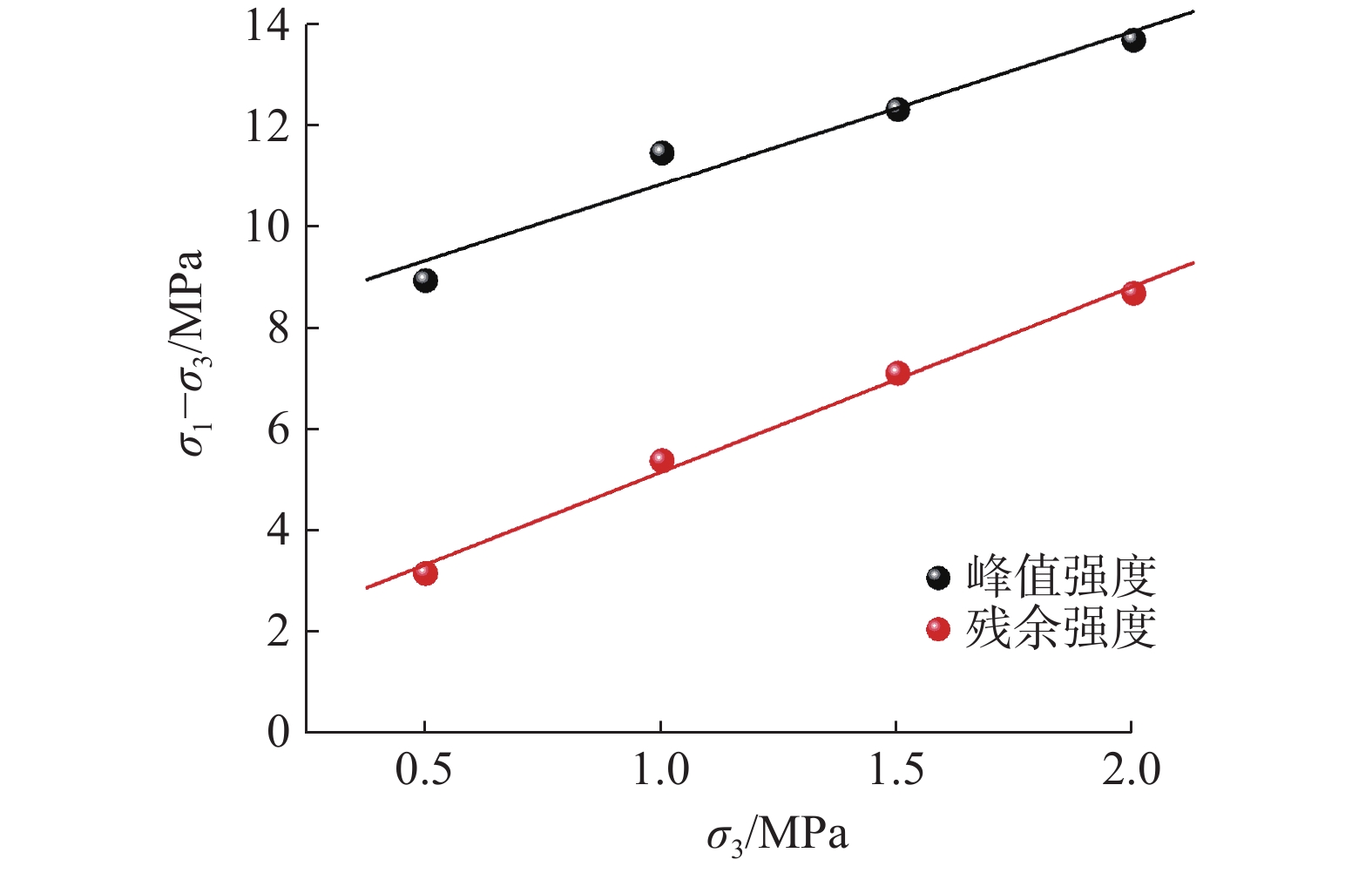
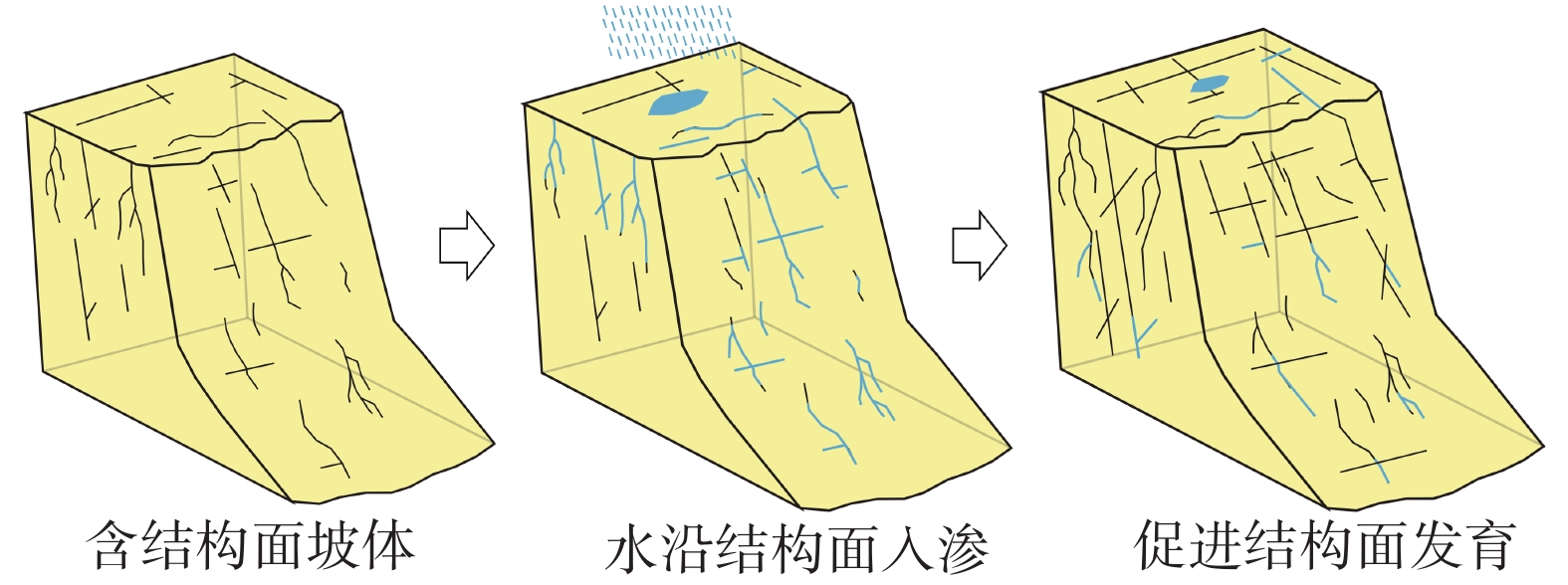

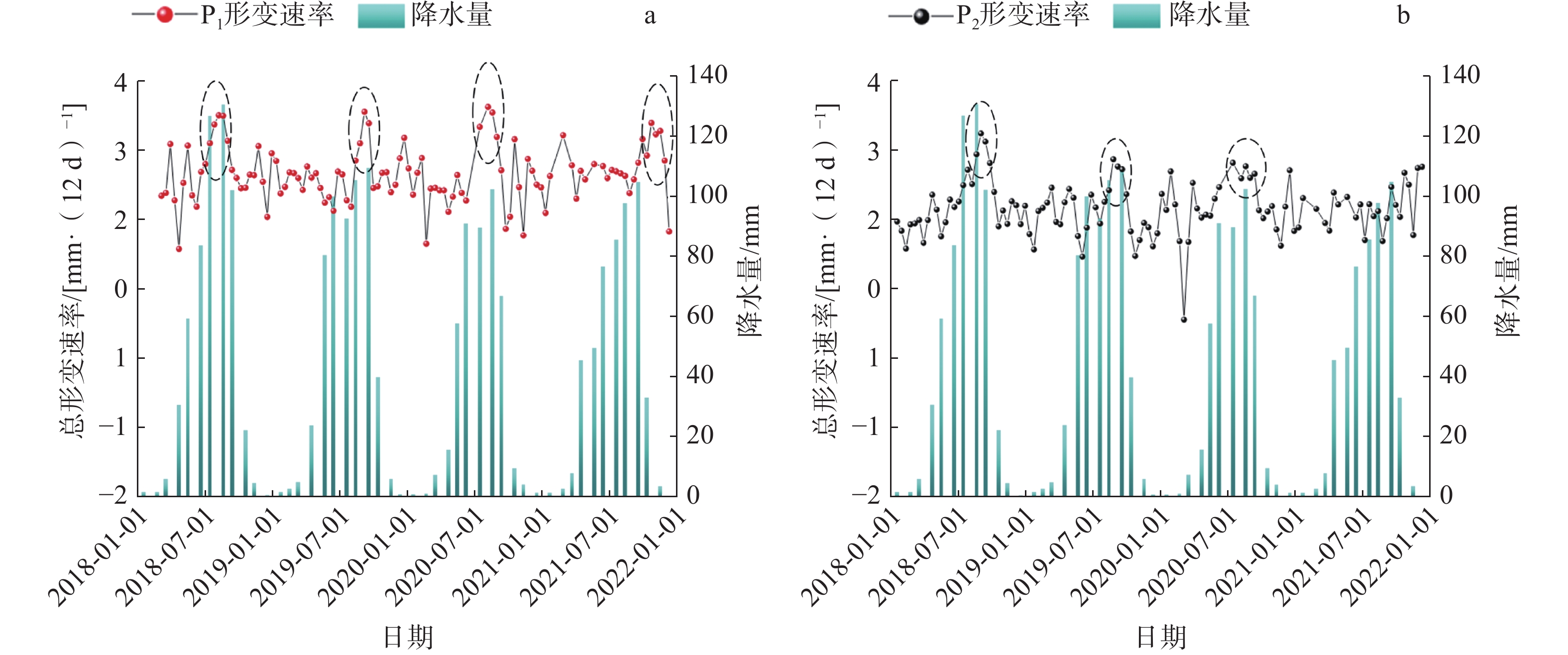
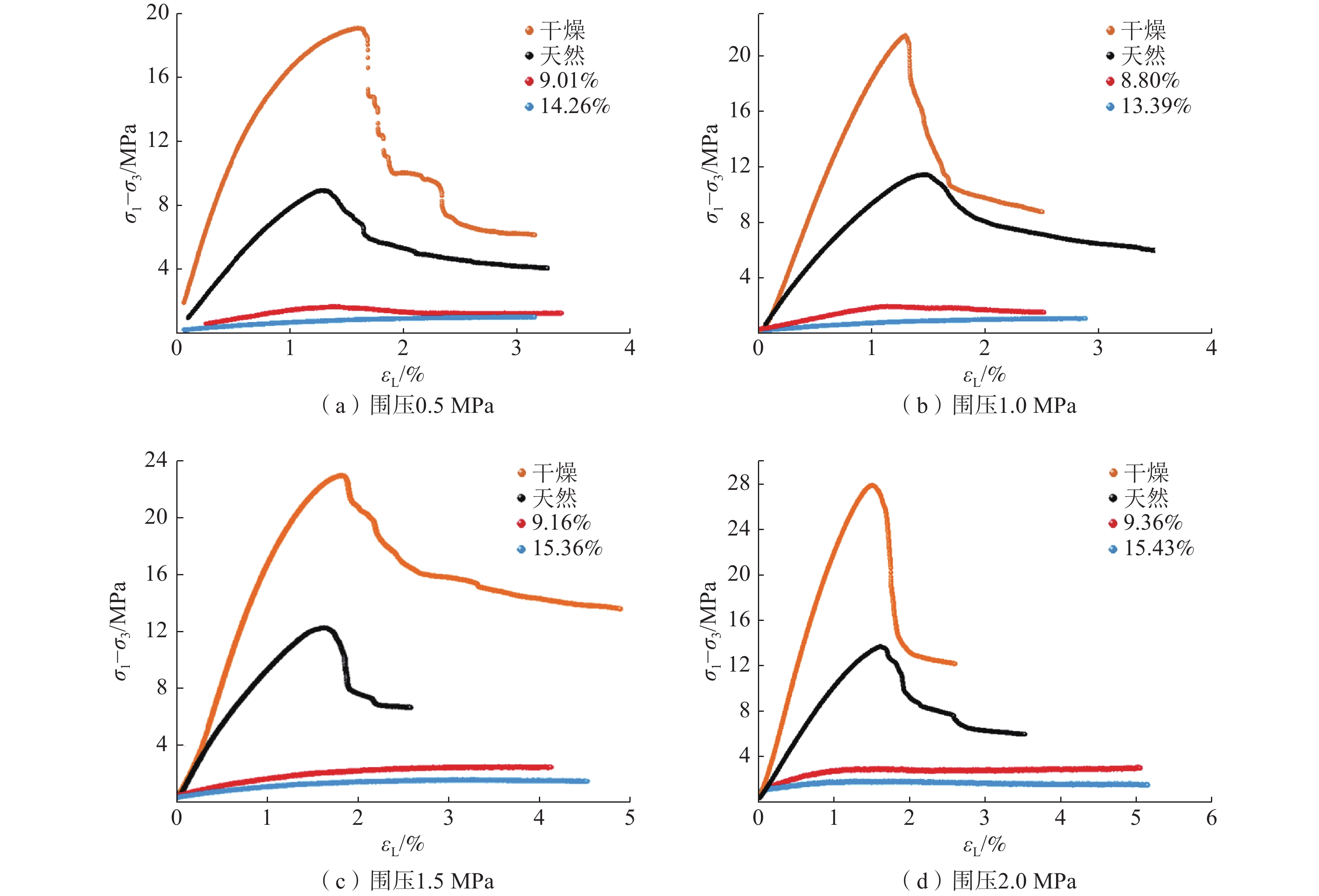



 邮件订阅
邮件订阅 RSS
RSS